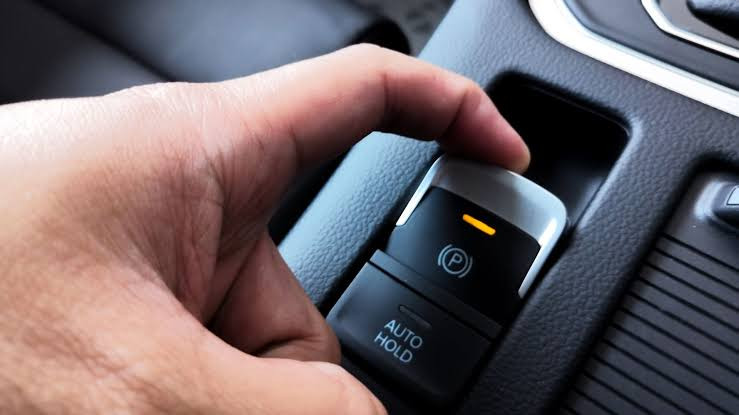This guide looks into the inner workings of the electronic parking brakes (EPB) system, explores its common problems, and equips you with valuable knowledge for informed decision-making.
The evolution of automotive technology has brought us a plethora of advancements, and the electronic parking brake (EPB) is a prime example. Replacing the traditional lever, the EPB boasts convenience and space-saving advantages. However, like any technological system, it's not without its potential drawbacks.
Electronic Parking Brake: Functionality and Design
The EPB system comprises an electronic control unit, a button for activation/deactivation, and an actuating mechanism. Pressing the button sends a signal to the control unit, which then engages the parking brake by tightening the brake pads against the rotors. This effectively immobilizes the vehicle when parked.
There are two primary types of EPB systems:
- Hybrid System: This setup utilizes an electric motor to mimic the function of the traditional lever. The motor activates a combination of manual-style cables and electronic components to engage the brakes.
- Full Electric System: This system eliminates the need for cables altogether. It employs two electric motors directly connected to the brake calipers, providing a more potent clamping force but with increased complexity.
Electronic Parking Brakes: Advantages and Benefits
The EPB system offers several advantages over its mechanical counterpart:
- Enhanced Space Utilization: Eliminating the bulky lever liberates valuable space in the center console, allowing for more innovative design layouts and additional storage options.
- Improved Safety Features: Some vehicles integrate the EPB with other safety systems like Hill Start Assist (HSA). The EPB automatically holds the vehicle stationary on an incline, preventing unwanted rolling.
- Simplified Operation: Engaging and disengaging the parking brake becomes a simple push or pull of a button, offering a more user-friendly experience for drivers of all abilities.
Troubleshooting the Electronic Parking Brake Common Problems and Solutions
While convenient, the EPB system is susceptible to certain issues:
- Locked Parking Brake: A dead battery or electrical malfunction can render the EPB inoperable. In some vehicles, a manual release mechanism allows temporary override in such situations. However, consulting a qualified mechanic for proper diagnosis and repair is crucial.
- Component Failure: The EPB system relies on various components, including cables, electrical wiring, and the control unit. Wear and tear, corrosion, or electrical faults can lead to malfunctions. A skilled mechanic can identify the specific issue and recommend appropriate repairs.
- Diagnostic Challenges: Diagnosing EPB problems often requires specialized scan tools to access the vehicle's electronic control unit. Attempting repairs without proper tools and expertise can exacerbate the problem.
Important Considerations for Drivers
While the EPB offers undeniable convenience, understanding its limitations is essential:
- Limited Emergency Use: Unlike traditional parking brakes, the EPB cannot be readily engaged while the vehicle is in motion. This can be a disadvantage in situations requiring an emergency stop. Always rely on your primary braking system for optimal safety.
- Dead Battery Dilemma: A dead battery renders the EPB inoperable, potentially preventing you from moving the vehicle until the battery is recharged or jump-started. Consider alternative parking strategies or carrying a portable jump starter as a precaution.
- Repair Complexity: Servicing the EPB system usually requires specialized tools and expertise. DIY repairs are not recommended, as improper intervention can lead to costly electronic system damage. Trusting a qualified mechanic ensures proper diagnosis, repair, and recalibration of the EPB system.
Conclusion
The EPB system represents a technological advancement in the automotive industry, offering convenience and potential safety benefits. However, a thorough understanding of its limitations and potential problems is crucial for informed decision-making. By being aware of these factors, you can leverage the advantages of the EPB system while taking necessary precautions to mitigate its drawbacks. Always prioritize your safety and the safety of others on the road. If you have any concerns about the operation or functionality of your vehicle's EPB system, consult a qualified mechanic for a professional diagnosis and peace of mind.

Comments (0)
Please login to join the discussion
Be the first to comment on this article!
Share your thoughts and start the discussion